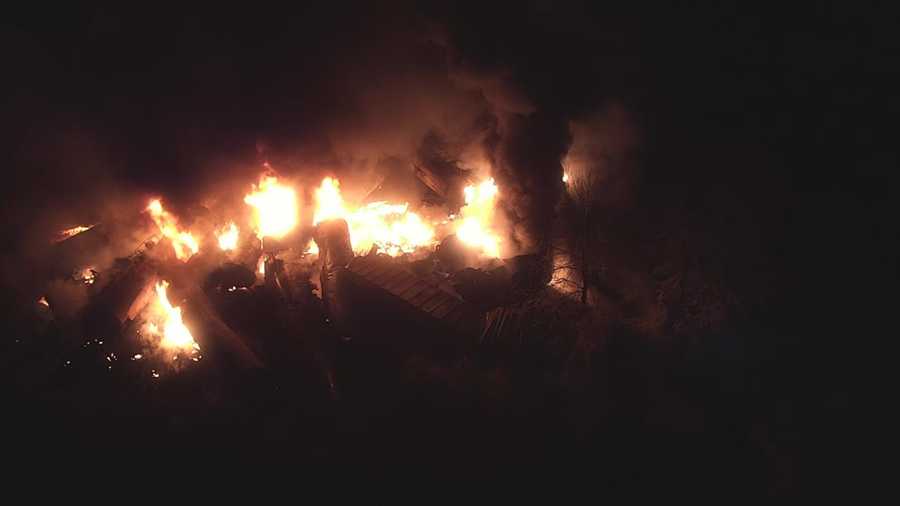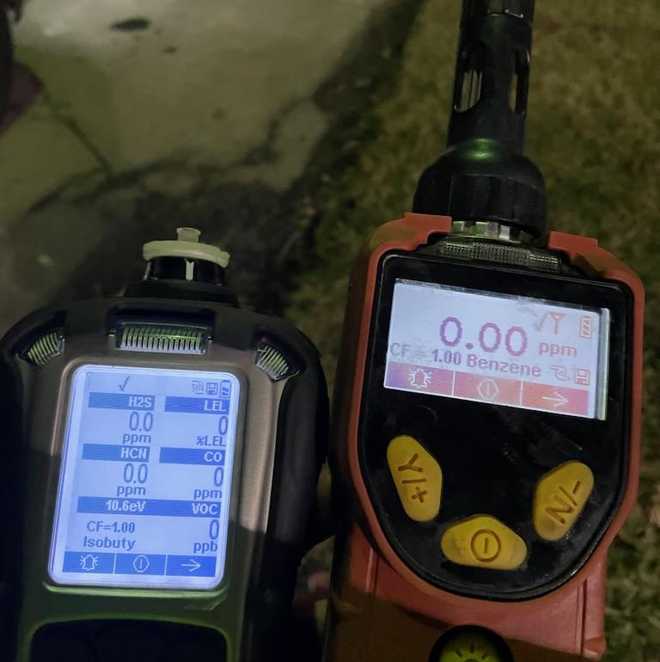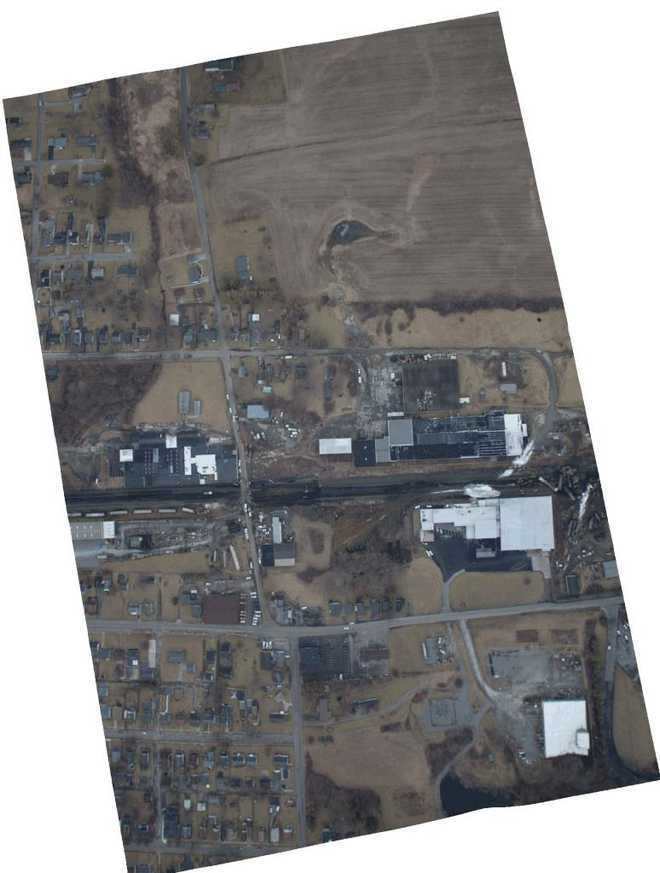Pitt expert: nothing 'threatening or concerning' detected in EPA air quality readings
The U.S. Environmental Protection Agency detected what one expert called “significant” levels of fine particles in the air during the hours following the controlled release of vinyl chloride from train cars that derailed in East Palestine, Ohio.
But chemicals that could have posed much greater risk to human health were not detected at dangerous levels, a University of Pittsburgh scientist who reviewed the EPA data confirmed.
Results from those studies of the air in and around East Palestine were released publicly as they became available between Tuesday and Friday.
They show nothing “threatening or concerning” in the air, according to University of Pittsburgh School of Public Health associate professor of environmental and occupational health James Fabisiak.
Pittsburgh’s Action News 4 first reached out to Fabisiak, who directs the Center for Health Environments and Communities at the University of Pittsburgh, on Tuesday evening in hopes of understanding what chemicals may be lingering in the air or water surrounding the train derailment in East Palestine.
When the Norfolk Southern train derailed on Feb. 3, five of the cars that left the tracks contained vinyl chloride, a chemical used to make the plastic more commonly known as PVC.
On Monday night, officials at the scene – concerned about the potential for a violent explosion – deliberately vented the vinyl chloride, resulting in a fiery column of smoke.
The controlled release prevented a catastrophe, but officials acknowledged that venting vinyl chloride into the air also came with a major risk: gases so dangerous they can kill entering city streets, homes and businesses.
Fabisiak explained that vinyl chloride, which is a gas at room temperature, also transforms into other chemicals when it catches fire. Several of those combustion products of vinyl chloride are potential health dangers, he said.
Among the dangers are gases called phosgene and hydrogen chloride.
Phosgene, Fabisiak said, had the potential to be immediately dangerous if it was present. After all, he said, it had been used as a deadly chemical warfare agent in the trenches of World War I.
He said phosgene was likely present to some extent. But the question was: how much?
“We never burn things very efficiently,” Fabisiak said Tuesday. “And that large cloud of smoke that you saw says that you’re not burning things efficiently. There’s obviously something there besides carbon dioxide and water.”
That’s where the EPA – and the agency's work to find it – come in.
How the EPA tested for phosgene and hydrogen chloride
In the hours following Monday’s controlled release, the information provided to the public about air monitoring was limited.
On Tuesday, East Palestine’s fire chief joined officials from several agencies charged with monitoring the air and water to brief residents. Among them was James Justice, spokesperson for the EPA’s Midwest region.
“We monitored through the duration of the night through the burn and following the burn. We did not detect anything of significance on site,” Justice said that evening.
But when asked to specify what chemicals they were measuring, and what levels of those chemicals they were looking for, he did not provide specifics.
“We’re still developing those from our subject matter experts at the health agencies,” Justice said Tuesday.
Information released later in the week made it clear there were already several chemicals the EPA had known to look for, including phosgene and hydrogen chloride.
Roughly 24 hours later the evacuation ended, Justice joined a press conference led by Ohio Gov. Mike DeWine. He revealed there that the EPA had, in fact, been searching for vinyl chloride, along with its toxic byproducts.
“Both very toxic chemicals,” Justice said Wednesday of phosgene and hydrogen chloride. “That’s why that controlled burn the other night was so important to get right. There was a potential for those contaminants to be released.”
Justice went on to say that monitoring had shown a small burst of “detections” at the site of the controlled release, but all below the level the EPA had determined to be a danger to human health.
A spokesperson for the EPA later clarified that while the agency did not collect samples at the scene to test for either phosgene or hydrogen chloride, staff at the scene did use monitors with chemical-specific equipment to look for them.
On Friday, Charles Rodriguez, a community involvement coordinator for the EPA, said in an email that the EPA did detect some phosgene, but not enough to be dangerous.
“U.S. EPA did monitor for phosgene and only had a short-term detection of around 3 parts per billion immediately downwind and at the initiation of the control burn,” he wrote.
And he provided some monitoring specifics: While tools the EPA used to check for vinyl chloride itself – known as photo-ionization detectors – could not specifically search for phosgene or hydrogen chloride, the EPA used different instruments to check for them.
Online, the EPA provided more details. To check for phosgene, hydrogen chloride and other possible contaminants, the EPA used a plane-mounted spectrometer to take readings from the air, and a gas monitor on the ground was configured to check specifically for phosgene and mineral acids, including hydrogen chloride.
Fabisiak looked at data released by the EPA from the East Palestine train derailment monitoring on Thursday night.
He said EPA ground monitoring results showed high levels of particulates in the air and some hydrogen chloride.
But while fine particulate matter – visible as soot and smoke at the scene of the fire – was present in what Fabisiak called “significant levels,” he said readings were not unexpected for a burn that size and dispersed relatively quickly.
“Everything appears relatively safe,” he wrote in an email.
From the air, he said spectral readings taken from a plane were likely “insignificant” from a health point of view.
“Bottom line: nothing immediately stands out as threatening or concerning and these findings do support a decision to allow people to return home. With, I hope, at least some measure of follow-up on community health,” Fabisiak wrote in an email.
Lingering concerns
For some residents living in and around the area evacuated due to the train derailment a week after the derailment, concern about toxic contaminants lingering in the environment continued.
By Friday evening, two separate lawsuits related to the derailment and controlled burn had emerged, including one calling for ongoing court-supervised health monitoring.
And Janet Hill, who lives 1.4 miles away from the derailment, also called for expanded air testing in homes within the evacuation zone.
“I think they should just automatically do the testing with it because the smoke was all over the place,” Hill said.
Norfolk Southern provided residents of the evacuation zone with a residential re-entry air monitoring program for use as they return home. To request air monitoring at their home, residents were instructed to call 330-849-3919.
Other resources are available:
- Norfolk Southern Family Assistance: 1-800-230-7049
- Home Air Screening: 1-330-849-3913
- Ohio EPA: 1-614-644-2160
- U.S. EPA: epaosc.org
- CTEH Toxicology: 1-234-542-6474
- Columbiana County Extension: 1-330-967-7249
- Community Action Agency: 1-330-424-4013






